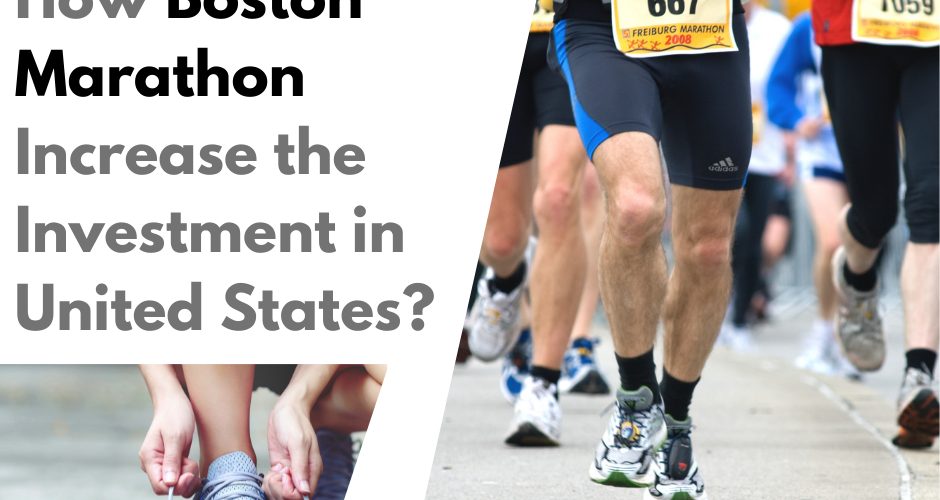This weekend marks the start of the world’s oldest annual marathon. It’s a great event for the runners, but it’s also a significant deal for Boston and several businesses.
Marathons and half-marathons have risen in popularity in recent years, without a question. However, if you assume these competitions are exclusive to the best athletes, you’re mistaken.
There’s a marathon for everyone, from casual runners to those looking for a challenge. Don’t forget about the racers who are completing their bucket lists.
Companies are spending money on races either for the grandness and publicity of a permanent corporate sponsorship, or just to gain a straightforward, lucrative return on investment because long-distance marathons are so expensive, time-consuming, and in demand. But what exactly are the economics of marathons?
Table of Contents
Fit physically (and financially)
On Monday, more than 20,000 Boston Marathon runners will flaunt their stuff on the iconic course through Beantown in front of a half-million spectators.
The majority of Boston Marathon runners qualify for the event by running a qualifying marathon in a particular period. Between the ages of 45 and 49, a female runner. For example, would require a sub-four-hour qualifying time to compete in the Boston Marathon.
Runners who do not meet the time requirement can still participate through a charity by donating $3,000 to their cause. That will just get your tired feet through the door.
Runners must spend money on travel, housing, and meals in addition to the $150 registration fee for US citizens ($200 for foreign residents). Of course, runners must remember to bring their basic running shoes and clothing.
In all, a runner from the United States should expect to pay $1,000 to nearly $3,000 to run the Boston Marathon. A runner that competes on a global scale will spend more. Assuming a $2,500 average tab per runner, this year’s marathon will generate $50 million in revenue!
Even if we ordinary mortals will instead occupy this weekend with couch-potato pastimes, we may still earn by investing in marathon-related merchandise.
Medical Investment
To begin, even the finest runners will frequently require medical assistance during a marathon. At mile 13, Flash’s sneakers, which he said he broke in weeks ago, may irritate him. Runners will still feel agony as they cross the finish line, despite the endorphin high.
Johnson & Johnson and Pfizer drugs will most likely be used to treat runners’ annoying blisters, stiff joints, and aching muscles. With Band-Aids, Tylenol, and Bengay, J&J has provided relief to millions of people for over 125 years. Pfizer’s Advil is the most popular over-the-counter pain medicine, while it’s ThermaCare Heatwraps provide portable and long-lasting heat treatment. And both of these Dow Jones Industrial Average bellwether companies have a dividend yield of more than 3%.
Shoe and running-apparel manufacturers The event is also expected to benefit Nike and Under Armour. Nike not only has the enviable position of being the worldwide market leader, but it also has the correct strategy and investments in place to keep it there. In the meantime, Under Armour, the new kid on the block has grown into a key participant in the worldwide sports footwear and clothing business.
Lululemon Athletica is best known for its high-priced yoga trousers, and also offers running gear for both men and women. Lululemon is one of the most successful shops in the United States, with sales per square foot of $1,900. In addition, the firm has several potential to expand in North America and abroad, notably in Europe and Asia.
Registration Cost
Marathons are a generally inelastic good, thus people still participate even if the cost of participation rises. And they’re usually prepared to pay a high price for it. Various fees, ranging from selection lotteries to registration fees, are charged by certain top events. These fees might add up quickly. The higher the stakes, the more expensive it will be.
For the 2019 race, US citizens who are members of the New York Road Runners club paid a $255 entry fee. For non-members, the charge has climbed to $295, and for non-U.S. citizens, it has increased to $358.
Consider the New York City Marathon, one of the most prestigious marathons in the world. Before they may be assured admittance, potential participants must fulfill specific qualifying requirements. For a chance to run in the marathon, the organization organizes a selection lottery. Then there’s the registration cost, which varies according to your financial situation.
Conclusion
The Boston Marathon holds a particular place in the hearts of many runners and non-runners alike. Marathon runners from all over the globe want to win a spot in Boston, and for many, running Boston is the pinnacle of their athletic careers. This marathon excites not only the runners but also the investors. For business people, this provides a new method to invest.




